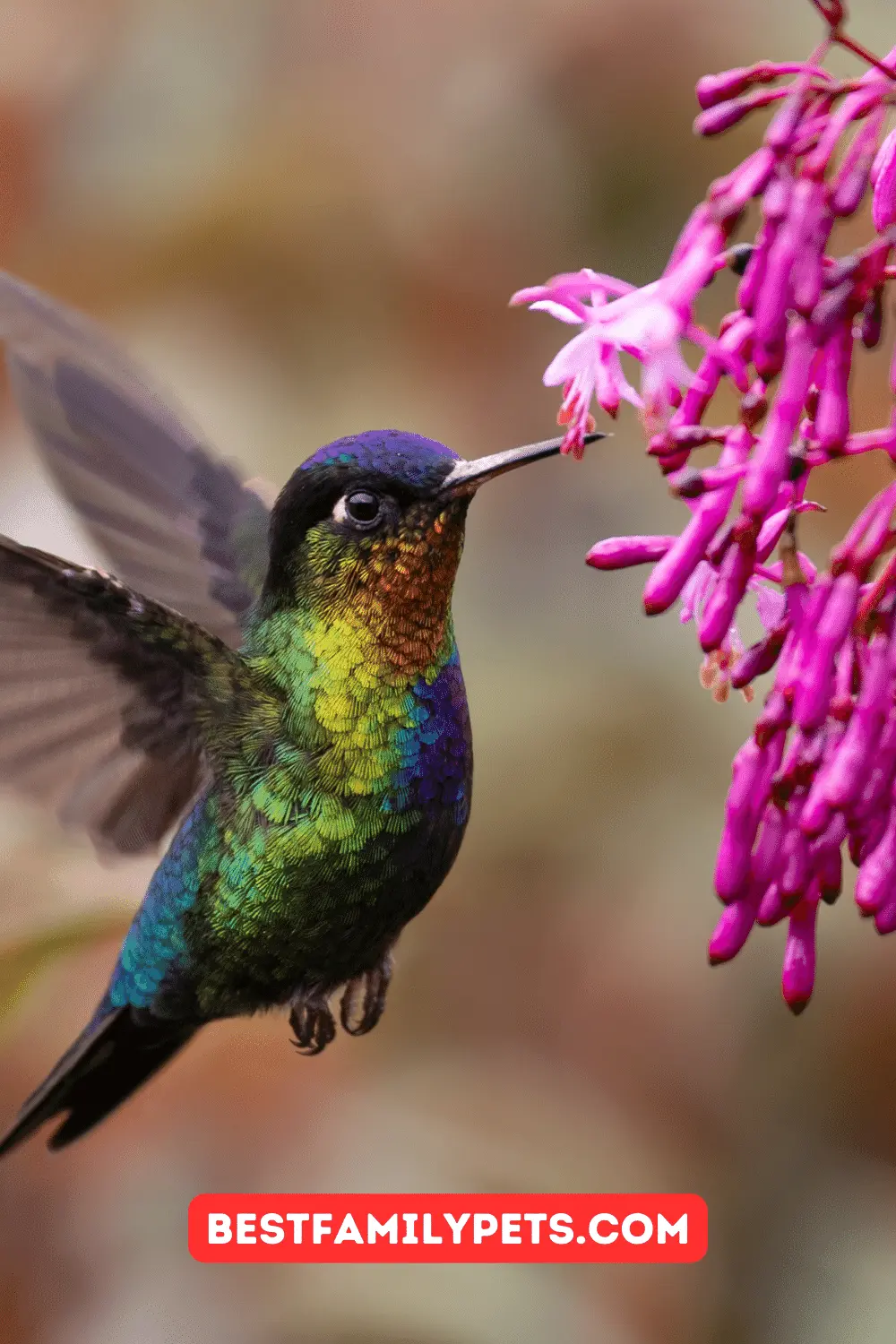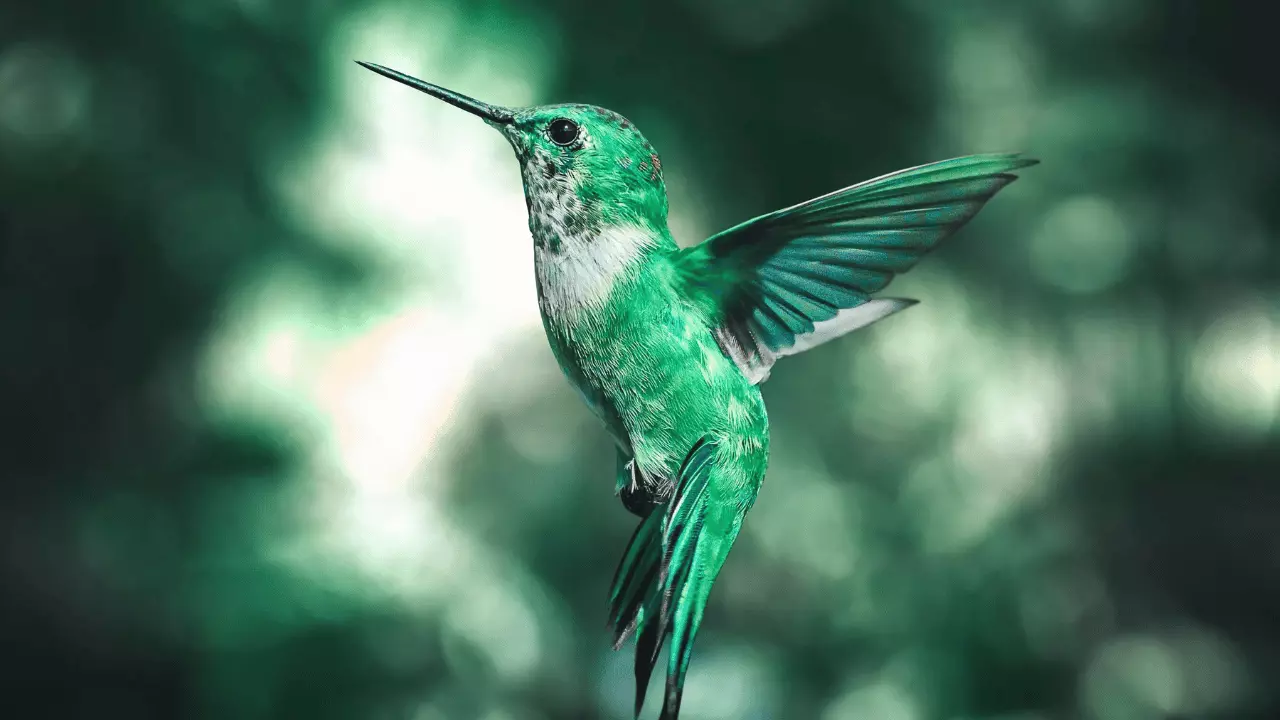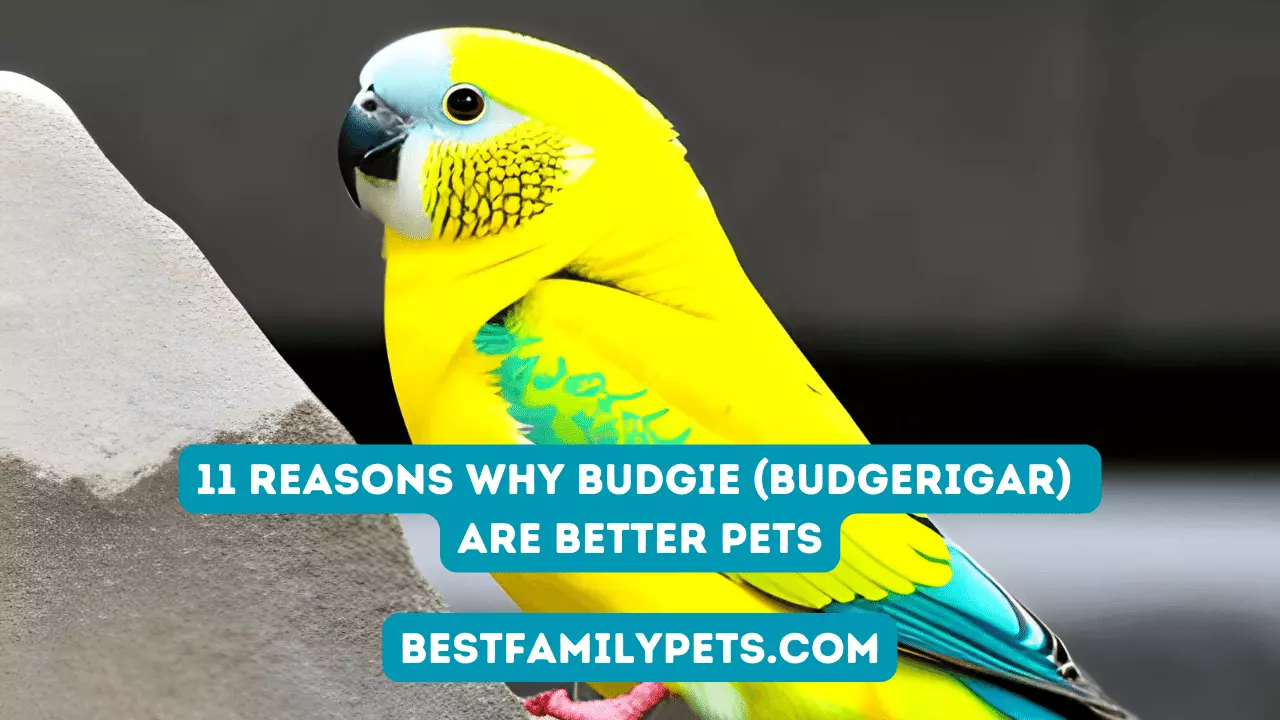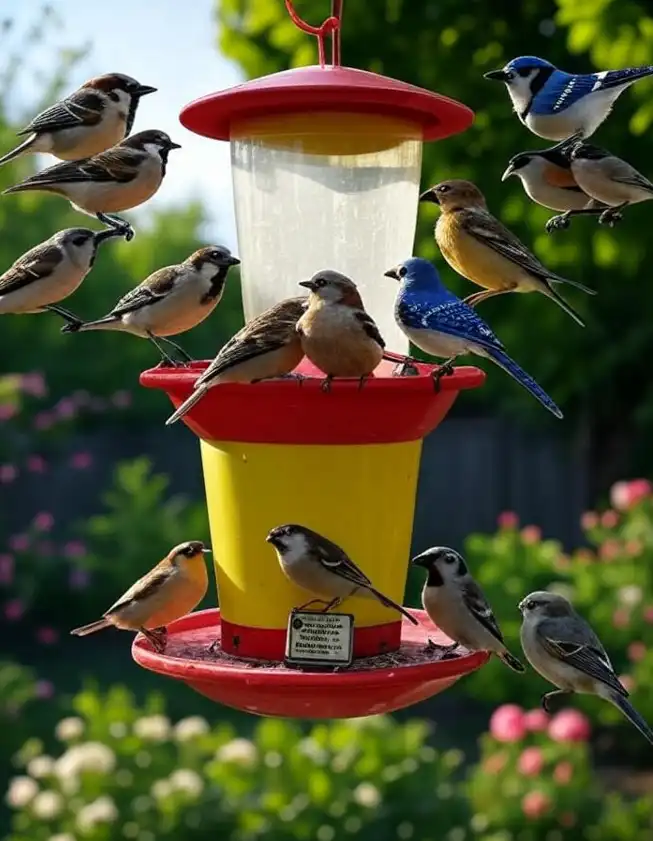Bird Feeders: Which is the Best of 2021?
If you are passionate about ornithology, you surely enjoy feeding birds, either wild or in captivity, for a better observation of their behavior. For this, nothing better than bird feeders, an invaluable help to delve into its rich world, capable of surprising the most skeptical human.
Crows, for example, have learned that vehicles can open nuts, and sparrows are able to open automatic supermarket doors to forage for food, a necessity that is not always available. Therefore, in this guide we will go over everything about bird feeders. Are you ready? Well pay attention.
The most important

- Bird feeders are a must-have accessory if you love birds, whether in captivity or in the wild.
- In many European countries it is common to feed birds in the wild, a custom that is gaining adherents in Spain and that requires bird feeders that can attract different species for observation.
- When buying a bird feeder it is important that you take into account its ease of cleaning and that the accessory has supports so that the animal can perch and eat with ease.
- Another fundamental aspect that must be considered is the robustness of the materials, especially if you are going to place it outside, whether on a terrace, a garden or a window.
The best bird feeders on the market: our favorites
In many areas of Europe it is customary to help birds in times of greatest need, especially in winter when food is scarce. Whether it is to attract wild birds or to feed birds in captivity, the truth is that there is a wide range of bird feeders and we have chosen the best ones exclusively for you.
- The best automatic bird feeder
- The ideal bird feeder for your terrace or garden
- The best wall feeder for birds
- The most handmade bird feeder
- The perfect wooden bird feeder to hang outside
The best automatic bird feeder
Made of acrylic and with more than 60% 5-star ratings, this automatic feeder is Amazon’s best-seller, which gives an idea of its efficiency and quality. It measures 14 x 10 x 7 cm, with a capacity of up to 400 grams of seeds.
In addition, it can store seeds for 7-15 days, and is designed for small-sized birds such as finches and canaries. Users praise its practicality and that it is also suitable for birds in the wild.
The ideal bird feeder for your terrace or garden
If what you like is bird watching, you’ve come to the right article. This bird feeder has it all: elegance, beauty and practicality. With it you will offer food to the birds in winter or summer because it is totally waterproof.
It’s easy to fill out, has over 60% 5-star ratings, and is easy to clean. Its dimensions are 25 x 23 x 20 cm and it weighs 399 grams, ideal for not swaying in the wind. You’ll love it!
The best wall feeder for birds
Of Dutch origin, this brand present among us since the 15th century endorses the quality and good work of the Esschert wall bird feeder, made entirely of cast iron and ideal for attracting all kinds of birds in the wild. Its dimensions are 21.5 x 28 x 26 cm and it has two very beautiful decorative birds.
The product, which is easily anchored with 3 drills, generates the visit of countless birds to your garden or terrace.
The most handmade bird feeder
If you like good quality handmade objects, this feeder is made of flagship pine and has special finishes to withstand any weather. Users are delighted, as demonstrated by 86% of 5-star ratings.
It is suitable for outdoors and includes a bag of birdseed or seeds. You can also hang tallow balls inside. It is handmade, elaborated and painted by hand, like all the Ecol-Logic production.
The perfect wooden bird feeder to hang outside
The Relaxdays brand endorses this bird food dispenser made of wood and ideal for outdoors, such as garden and terrace. It is a fully varnished wooden feeder to increase its impermeability. It has a cover and has a hanging rope of approximately 18 centimeters.
Its dimensions are 26 x 15 x 15 cm and it weighs 350 grams. The holes in the wire mesh are 7 by 7 cm.
Shopping Guide: Everything You Should Know About Bird Feeders

It is not necessary to have a house in the country to enjoy the song of the birds or to relax observing their behavior. A window facing the outside is enough and you can contribute to their food in winter and summer with a good bird feeder. You have doubts? Next, the most frequently asked questions from users.
What are bird feeders and what are they for?
They are containers of different sizes and shapes that are placed inside or outside the cages and that have an opening for the birds to have food. In addition, there are outdoor feeders or feeders, devices that contain seeds and grains so that wild birds can feed when it rains or snows.
Feeders for wild birds are common in many western countries and are gradually being introduced in our country. But, it is noteworthy that feeders are not limited to wild birds only. To your surprise, pigeon feeders and waterers are pretty common in households across the northern hemisphere. This type of bird feeder is necessary to protect them from cats, in the case of placing it outside a house, and from squirrels and other animals when they are hung in trees, parks or gardens.
What types of bird feeders can we find on the market?
There are a wide variety of bird feeders in specialty pet stores, for both captive and wild birds. In this section we show you the most common bird feeders, although there are many types.
When do I deposit feed on bird feeders for wild birds?
In general, in times of prolonged cold and snow. Specifically, it is advisable that the feeding takes place from the middle of November to the end of March. Feeding the birds in spring and summer is not recommended for two reasons. On the one hand, because many birds become insectivores in these seasons.
On the other hand, it is not advisable to feed birds in the wild in the summer season to avoid creating a dependency relationship with respect to the young birds of the year, which must learn to feed themselves.
Where to put the bird feeders?
It is not the same that you have a parrot in a cage to have a feeder for wild birds. In any case, you should keep them away from predators, such as cats, so be careful if there is a bush nearby that the feline can climb. If what you like is bird watching, pay attention to the following tips:
- View: You must have a good view of the bird feeder, so it is convenient that you place it in a clear place and where you can easily see it from a window.
- Protected area: It is important that you place the bird feeders in places that can serve as a refuge in case of adverse weather conditions. If it rains frequently or snows in your area, find a place where the birds are safe from bad weather.
- Ease of use: Keep in mind that bird feeders are located where you can easily refill them. If you need a ladder to do the operation, it is more difficult to perform common tasks, such as cleaning.
- Get their attention: It is also convenient that you use bright colors to attract the attention of wild birds. Use flower pots and colorful objects to go to the food dispenser.
- Attractive food: Use the seeds and grain that are most suitable for each wild bird. Hummingbirds love nectar, but not all birds.
- Drinkers and patches: If you want wild birds to stay in bird feeders longer than to feed, add perches for their comfort and plenty of water in a drinker.
- Dispenser review: Sometimes we don’t see them visiting, but many birds sneak in to enjoy the feeder at ease. For this reason, it is advisable to check grain levels frequently.
Why is it a good idea for bird feeders to have a roof?
Generally, it does not matter if the bird feeders have a roof or not, but if you want to feed wild birds it is a good idea to have one. In addition to protecting from rain and larger birds, it ensures that the seeds stay dry and that the birds can use the feeder to spend the night.
What food to put in a feeder for wild birds?
During winter, the most suitable foods are those with many calories, such as peanuts or black pipes, which are higher in fat. Tallow balls and tallow cakes are also highly recommended during the colder months, although they can be provided year-round. Other advisable foods are:
- Seed mixture: The best will be the one composed of sunflower, peanut and ground corn.
- Sunflower seeds: If possible, not striated and unroasted and without salt.
- Nuts: crushed almonds, walnuts, hazelnuts and corn, unroasted and unsalted.
- Seeds: Small, such as millet, oats or Niger.
- Fruits: Both fresh and dehydrated.
- Bread: Simple vegetable oil or vegetable oil mixed with seeds, berries or insects.
What kinds of birds tend to go to bird feeders?
Not all birds visit open-air bird feeders, but there are some granivorous sparrows that you will see regularly. Remember that the visits will not be immediate because the birds first make sure that they are in a safe environment. In the following list you can see some of the most common species:
- Great tit
- Blue tit or Cyanistas caeruleus
- Chickadee or Periparus ater
- European robin
- Nuthatch or European Sitta
- House sparrow
- Tree sparrow
- Starling
- Goldfinch
- Finch
- Bunting
- Fathead or Coccothraustes Coccothraustes
How to clean bird feeders?
Keeping bird feeders clean is crucial because they can carry disease. In general, a thorough cleaning is advised once or twice a month. In the case of outdoor bird feeders, it is advisable to wait until the winter feeding season is over. For maintenance, follow these steps:
- The team: Put on rubber gloves to clean up and avoid unwanted pathogens. It is also important that you have brushes on hand –in pet stores you can find them all sizes and shapes– to remove dirt from perches, hooks or posts. You can also use an old toothbrush and save yourself money.
- Parts Removal: Disassemble the bird feeder as much as possible, the goal is to thoroughly clean all removable parts.
- Surrounding areas: Do not forget the areas near the feeder, both on the sides and below, where there may be remains of seeds or moistened grains. Remove them before cleaning.
- Products: You can buy commercial products or you can mix a solution of one part bleach to nine parts hot water. Another effective formula is to use the dish soap that you use regularly in your house.
- Deep cleaning: Proceed to brush feces and residue from the feeder, both inside and out.
- Rinse and dry: Once you have removed all the dirt and organic debris, rinse with plenty of water and dry the feeder well before using it again.
What special care should I take with an outdoor bird feeder?

If you have come this far, you will have already realized that cleaning is essential in bird feeders because there is a risk of disease. For those who live in snowy areas it is important to clean in the thaw season. Bacteria mix with food and water, which can create an outbreak.
On the other hand, it is essential to avoid any risk of contamination by excrement or food scraps. Although cleaning twice a month is recommended, do it as often as possible. If you have a lot of birds, you will realize their need. Also, don’t allow too much uneaten food to accumulate.
Purchase criteria
Buying feeders for birds should be easy, but there are so many models and so many varieties that it is difficult to choose one. Therefore, you must take into account a series of factors so as not to make a mistake in the purchase. In this section we summarize the most important criteria that you must consider before proceeding with its acquisition.
- Birds in captivity or wild
- Where are you going to place it?
- Easy to use
- Design
- Materials
- Cleaning
Birds in captivity or wild
Especially if you are a beginner, you have to know in advance if you want a feeder for birds that live at home or if, on the contrary, you want to feed wild birds. If it is for a cage, do not forget to contrast the data regarding the measurements of the feeder. It won’t do any good if it can’t fit inside dimensions.
Where are you going to place it?
It is not the same that you want to place a bird feeder inside your house or apartment than in the garden or on the terrace. If it is for outdoors, you have already seen that there are models with wall support, hanging or suction cup, among others, but you will have to take into account predators such as cats and put it out of their reach.
Easy to use
Bird feeders should be simple and easy to use. By this we mean the ease of replenishing the food or emptying it. In addition, you should consider that it is also comfortable for your small pets, whether they are your property or roam free in the forests and urban parks.
In this sense, bird feeders must have supports or perches so that birds can perch and access the food without difficulty. Take this aspect into account.
Design
As you have seen, there are many different designs of bird feeders. There are very decorative designs for your terrace or garden, but also take into account important aspects regarding the comfort of the bird. The feeder must be wide and spacious, in addition to having a roof if you are going to place it outside.
Materials
The materials of manufacture of the bird feeders are also a fundamental factor. Especially if it is for exterior, the material must be resistant and robust, indicated to withstand inclement weather. If it is made of wood, it must have a treatment to protect it from moisture. Always choose quality, if possible.
Cleaning
Finally, one of the most important factors is comfort when cleaning bird feeders. It is preferable that it has removable parts for easy maintenance. Bet on simple models that highlight the ease of cleaning so that the task is not unpleasant or uncomfortable.
Summary
Bird feeders are highly relevant accessories for birds, since their livelihood depends on them. They must be wide and have good support so that the animal can rest calmly before accessing food. There is a wide variety of models and the best thing is that you can buy them online.
Regarding prices, bird feeders are not expensive, so you should focus on other more important characteristics, such as materials, design or ease of cleaning, this last key aspect for the health of these little gems of nature. that they bring so much beauty with their songs or just by observing them.
-

2025 Backyard Bird Feeder Innovation Award Winner: Spicy Seed Sauce by CreatureCops™
-



Best Hummingbird Feeders Under $20
-



Top 10 Best Selling List for Birds Bed Sale XL
-
What can I use a bird food?
-



Tips on How to Attract Hummingbirds at Home
-



What You Should Know Before Getting An Exotic Pet
-



11 Reasons Why Budgie (Budgerigar) Are Better Pets
-
Birds Beds that Look like Human Beds
-
Orthopedic Birds Bed XL
-
Ebay Birdss
-
Best Waterproof Birds Bed
-
Large Purple Birds Bed


